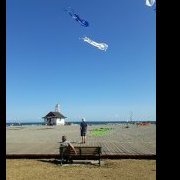[Myanmar] Six Years On, Truth Elusive in Japanese Cameraman’s Killing
-
Recently Browsing 0 members
- No registered users viewing this page.
-
Topics
-
-
Popular Contributors
-
-
Latest posts...
-
195
Epstein Coverup Continues
MAGA cult is posting all the time about how Trump will sail through the mid-term elections with another majority for the Republicans. My prediction is that Trump will not be around by that time. -
0
Report Swede, Aussie Found Dead Hours Apart in Same Pattaya Condo
Picture courtesy of Amarin TV In a startling incident that has left Pattaya City reeling, two foreign men were discovered dead in the same condominium building within hours of each other. Thai police have launched an intensive investigation to resolve the confusion surrounding these deaths. The tragedy unfolded when authorities first responded to a call at 2 p.m. regarding the death of a 38-year-old Swedish man, Mr. Mika Huotari, found in a fifth-floor unit. Mr. Huotari was discovered naked in an overflowing Jacuzzi, with a noticeable laceration on his forehead and right eyebrow. Blood seeped into the water beneath him, but intriguingly, the room showed no evidence of a struggle. Just two hours later, police were summoned again to the same building. This time, they found a 54-year-old Australian, Mr. Michael Shane, dead on the seventh floor. He lay in a pool of blood with a broken glass near his elbow, surrounded by scattered medicine bottles, yet again with no signs of a violent struggle. The unsettling nature of these finds has cast a cloud of suspicion and concern over the condominium’s residents. Ms. Thanchan ok Prajit, the 27-year-old caretaker, became involved when a friend of Mr. Shane reached out due to a lack of contact for two days. Detecting a foul odour emanating from Mr. Shane's locked room, she swiftly took action by calling the police, setting off a grim sequence of discoveries. Police diligently photographed the scenes and collected evidence from both locations. The deceased were then transported to Pattakhun Hospital, with their relatives informed of the tragic occurrences. The investigation now hinges on piecing together the events leading to these sudden deaths, a task compounded by their proximity in location and timing. Authorities remain cautious, with no leads dismissed at this early stage. As the investigation deepens, forensic analysis will play a pivotal role in understanding whether these incidents were tragic coincidences or part of a more sinister plot. The police urge anyone with information that could aid their inquiry to come forward. The unsettling dual discoveries in such a close timeframe have stirred unease in the community. While no direct link between the deaths has been established, the eerie circumstances ensure that the inquiry remains a high priority for Pattaya’s law enforcement. The city awaits answers as investigators work tirelessly to uncover the truth. Adapted by ASEAN Now from Thai Newsroom 2025-07-18 -
1
-
-
0
Another brilliant idea from the Trump administration
Trump insists that companies in the US now use real cane sugar in their products instead of fructose. While at the same time slapping up to 50% tariffs on the countries that the US imports cane sugar from. The world's biggest sugarcane producers are Brazil and India, followed by China, Thailand https://finance.yahoo.com/news/cokes-shift-cane-sugar-expensive-191618706.html The Corn Refiners Association said the complete elimination of high fructose corn syrup from the U.S. food and beverage supply would cut corn prices by up to 34 cents a bushel, resulting in a loss of $5.1 billion in farm revenue. Trump's ongoing trade wars, however, would make it difficult to cover the deficit, sugar analyst Michael McDougall said. "It will most likely come from Brazil," he said, referring to the world's top cane sugar producer, "but Trump just hit Brazil with a 50% import tariff." Coke's shift to cane sugar would be expensive, hurt US farmers -
789
Israel Hamas War the Widening Middle East Conflict
Pope Leo XIV has renewed his call for a Gaza ceasefire after three people sheltering in the Catholic church in Gaza City were killed in an Israeli strike. A telegram said the Pope was "deeply saddened to learn of the loss of life and injury caused by the military attack" on the Holy Family Church. The Latin Patriarchate of Jerusalem, which oversees the church, said it was "struck by the Israeli army". Nine other people were wounded, one of whom is in a critical condition in hospital. The parish priest was lightly injured. https://www.bbc.co.uk/news/articles/c8xvnlpx2dxo
-
-
Popular in The Pub




.thumb.jpg.3ee24d9400fb02605ea21bc13b1bf901.jpg)


.thumb.jpeg.d2d19a66404642fd9ff62d6262fd153e.jpeg)






Recommended Posts
Create an account or sign in to comment
You need to be a member in order to leave a comment
Create an account
Sign up for a new account in our community. It's easy!
Register a new accountSign in
Already have an account? Sign in here.
Sign In Now